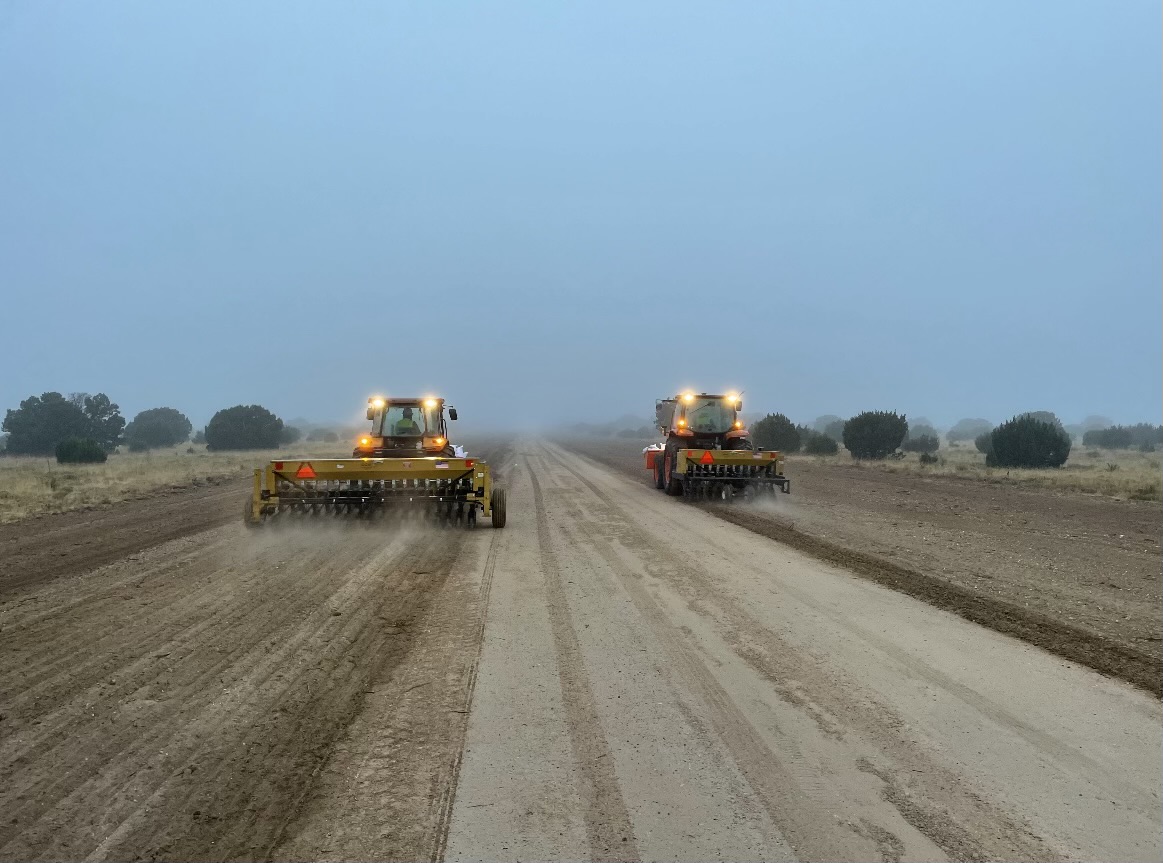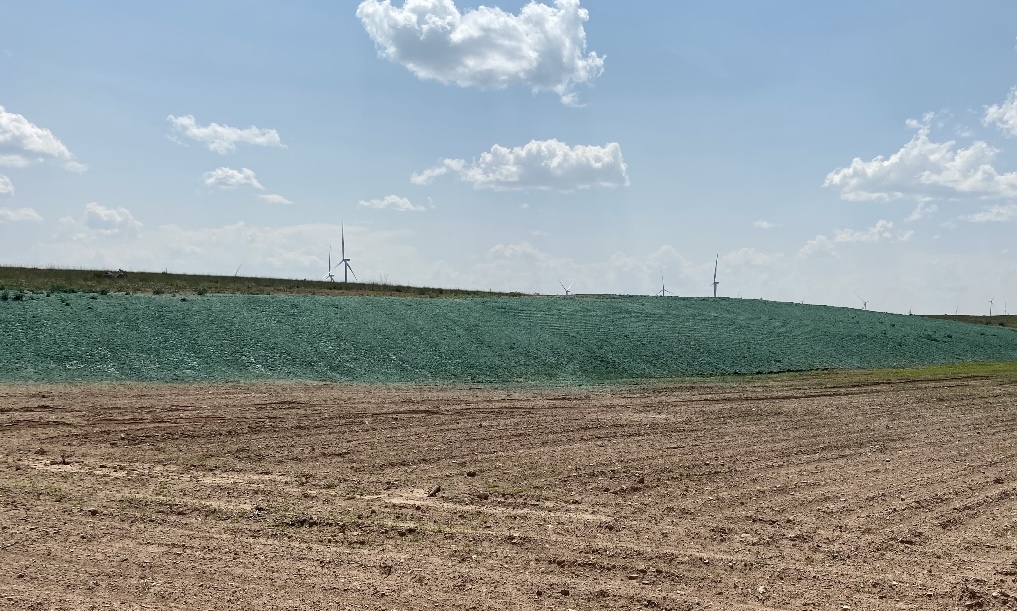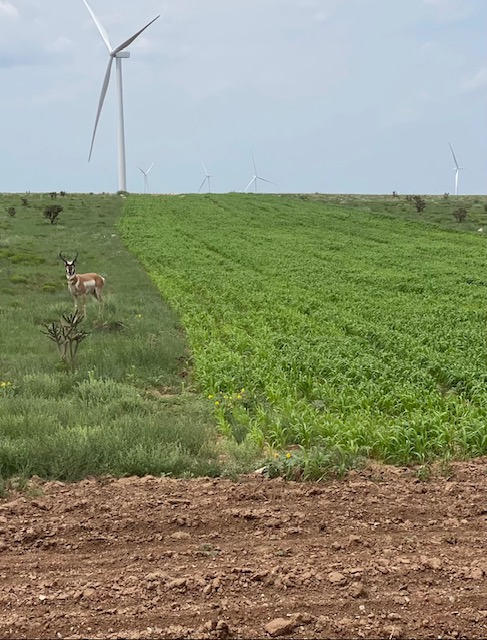“The native grasses of New Mexico are a treasured commodity,” said Ross. “If you drive a vehicle over it you can see tracks in the ground a year later. It’s our responsibility to care for the land where we live and work.”

Raking and seeding the soil
At the time of its construction, Western Spirit Wind set records as the largest combined megawattage to be installed in a single phase at a wind energy site. With 1,050 MW of installed capacity, Western Spirit Wind’s 377 turbines are installed in an area spanning portions of Red Cloud, Duran Mesa, Clines Corners, and Tecolote.
During construction of any energy facility, crews must build roads and supply areas in the course of their work. All that activity leaves marks on the land, which must be repaired through a process of environmental reclamation.
Scott Ross is the Facility Manager for Red Cloud and Duran Mesa at Pattern Energy. In addition to overseeing the operations of the turbines, he makes sure the environmental reclamation efforts stay on track.
Environmental reclamation and stewardship
“The native grasses of New Mexico are a treasured commodity,” Ross says. “If you drive a vehicle over it you can see tracks in the ground a year later. It’s our responsibility to care for the land where we live and work.”
Reclamation work began even before construction was completed in late 2021. “It’s been two years so far, and by the end of the fifth year, we expect to have the environment back to exactly how it was before we started construction,” Ross says.
Building foundations for 377 wind turbines is a massive undertaking. Crews constructed access roads to bring tower sections, nacelles, and blades to each turbine site. Large cranes were brought in to hoist the turbine components into place. Collection lines needed to be run throughout the facility.
“We disrupted a lot of country,” Ross says, “but we’re doing a good job so far. Every time construction was completed on a turbine and the collection lines installed, we’d move on to the next one, and the environmental reclamation team from Drake Industries would come in behind us to start clean up on the site we just completed.”

The ground looks turquoise after being sprayed
How environmental reclamation works
As you can see in the photo, large tractors come in and then rake and reseed the soil. As they go they ensure there are no large boulders or rocks and lay seed down where they have raked the ground.
New Mexico wind and rain can be intense. To help native New Mexican grasses avoid being washed away by wind or rain, a combination of biomulch and tubing waddles is used to protect the soil.

The bright grass on the right will die and become mulch for native grass
Biomulch
“There is a non-native grass we use that is perfect to protect the native seeds,” Ross says. He explained that after the native seeds are planted, a hose is used to spray a protective, turquoise-colored mulch over the ground that forms a hard shell and gives the slow-growing native grasses a chance to take hold in the soil and form strong roots.”
Another way native grasses get help is that non-native grass is planted by the spray. This non-native grass grows faster than native seeds and as it shoots up in growth, it provides a protective cover for native grasses.
After the non-native grass reaches its full height, it dies. The resulting dead plant matter turns to mulch, further enriching the soil for the native grasses as they continue to grow.
Bio waddles
Bio waddles are long sections of black or green plastic tubing that are run along the ground in areas where new grasses have been planted and the soil is more raw.
Native grasses need to be protected from rain while they are growing and bio waddle tubing mitigates those threats.
The bio waddles lie on the ground. When rain gets intense and water starts running over the land, the water runs into the bio waddles which slow it down and disperse it. The result is a soft barrier against the kind of damage water can cause while native grasses are still spreading.
The tubes themselves are biodegradable. In two to three years they will completely decompose after having given the grass time to return.

Looking forward to year five
It’s been two years of work, and so far, so good, says Ross.
“I got a call recently from a land owner who let me know the grass wasn’t taking hold in an area, and so we got back out there to take care of it,” he says. “The job of environmental reclamation is ever evolving, but we love to do it.”
By the end of next year, Ross expects the land to be at 80 percent of where it was pre-construction, and by the end of year five, “the ground will look exactly like it did before construction began.”